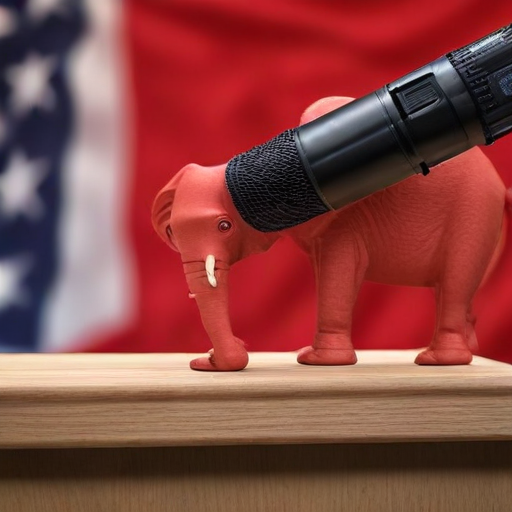As the world’s oldest democracy prepares to elect its 47th President, it’s an opportune moment to reflect on the history of the Republican Party and its members, often referred to as Republicans.
The Republican Party, commonly known as the Grand Old Party (GOP), was established in March 1854 in Ripon, Wisconsin. The party’s roots can be traced back to the term republican, which was initially adopted by supporters of Thomas Jefferson in 1792. Over time, Jefferson’s faction evolved into what is now known as the Democratic Party, the GOP’s primary rival.
A notable aspect of the Republican Party’s identity is its association with the color red, a designation popularized by news broadcasters during the 2000 election, where states won by George W. Bush were marked in red. Abraham Lincoln, the first Republican president, notably played a crucial role in abolishing slavery, earning the party the distinction of being called “the party of Lincoln.”
Core beliefs of the Republican Party center around its historical opposition to slavery, particularly in response to the Kansas-Nebraska Act. Economic reform, classical liberalism, and a coalition of various groups—including members of the anti-slavery movement and the Whig Party—also formed part of its foundation. Today, the party emphasizes economic nationalism, reduced government intervention, tax reductions, and traditional social values, including particularly conservative stances on reproductive rights and transgender issues.
In terms of foreign policy, Republicans have traditionally supported a strong defense and the pursuit of national interests, often adopting interventionist measures. However, recent shifts indicate a move toward more protectionist and non-interventionist policies.
The characterization of the party as the GOP and its connection to the elephant symbol emerged in the 1870s, primarily through political cartoonist Thomas Nast. Historically, the GOP saw significant electoral success from 1860 to 1932, appealing to northern and mid-western farmers and big-business interests, later gaining traction with middle-class suburbanites. Presently, its core support comes from evangelical Christians, rural and white voters, and senior citizens.
The Republican Party’s historical challenges, including a loss of power during the Great Depression, resulted in the emergence of a moderate faction that regained leadership in the 1950s under President Dwight D. Eisenhower. This tradition continued with figures such as Richard Nixon, Ronald Reagan, and both George Bushes. However, Republican John McCain’s loss to Barack Obama in 2008 marked a resurgence of the Democratic Party.
The presidency of Donald Trump from 2017 to 2021 saw a notable shift towards right-wing and populist ideologies within the GOP. This era brought about divisions among party members, with factions such as never-Trump conservatives, Trump boosters, and various other ideological groups emerging. Research has identified multiple factions within the party, ranging from committed conservatives to those aligned with the MAGA movement.
As the Republican Party navigates its future, the multitude of factions and evolving ideologies suggests a vibrant and complex political landscape. This diversity may also represent a unique opportunity for the GOP to recalibrate and connect with a broader range of constituents, promoting dialogue and understanding among its members.
Hope remains that the Republican Party can unify its varying factions and focus on core values that foster inclusion while addressing the contemporary concerns of American society. The upcoming elections may serve as a pivotal moment for shaping the party’s trajectory and engagement with voters across the nation.
